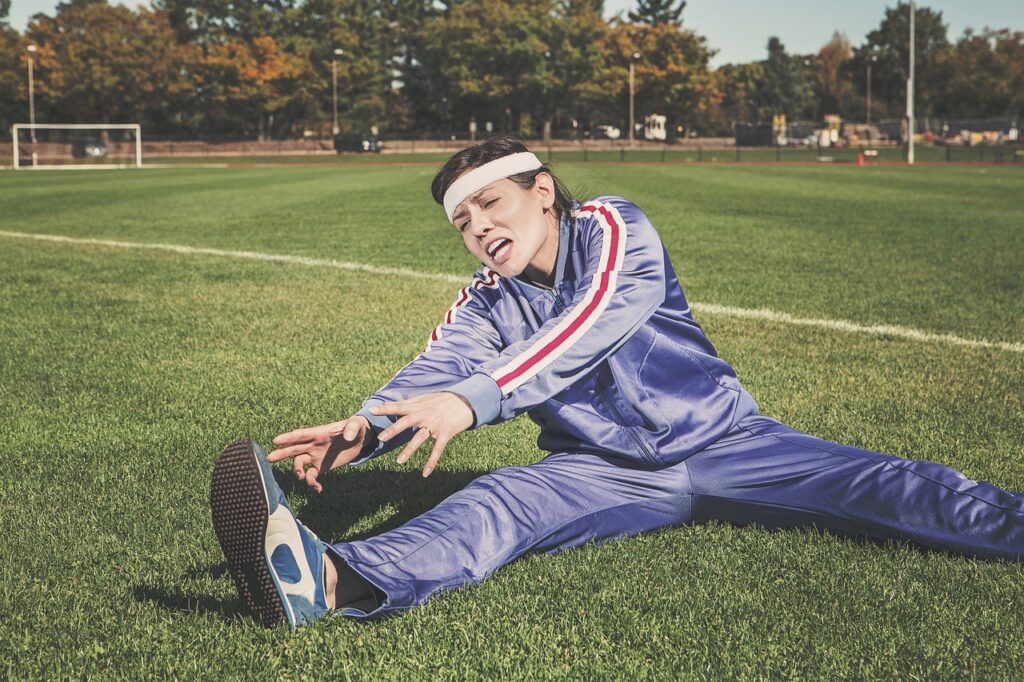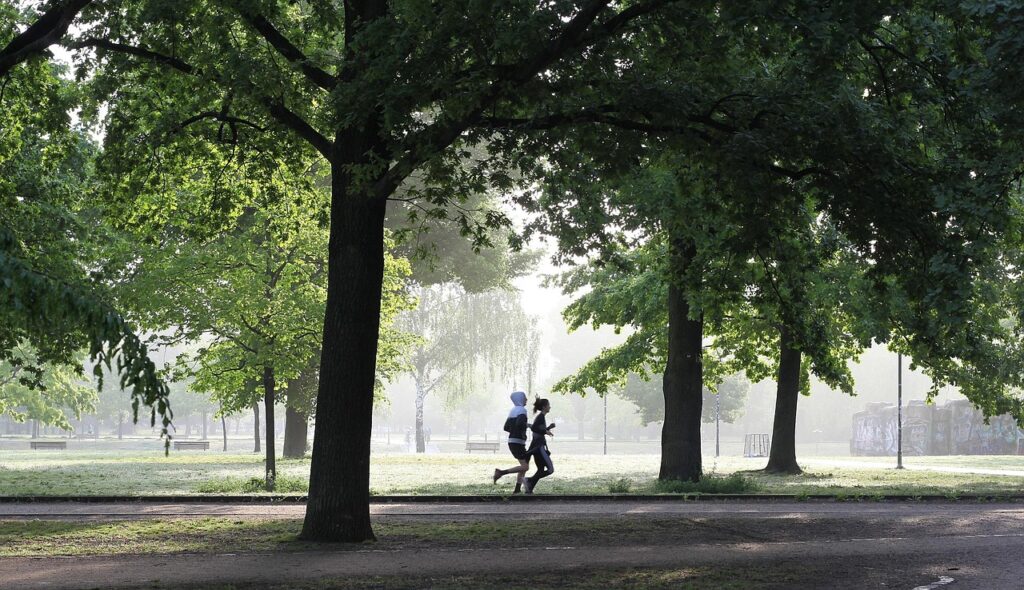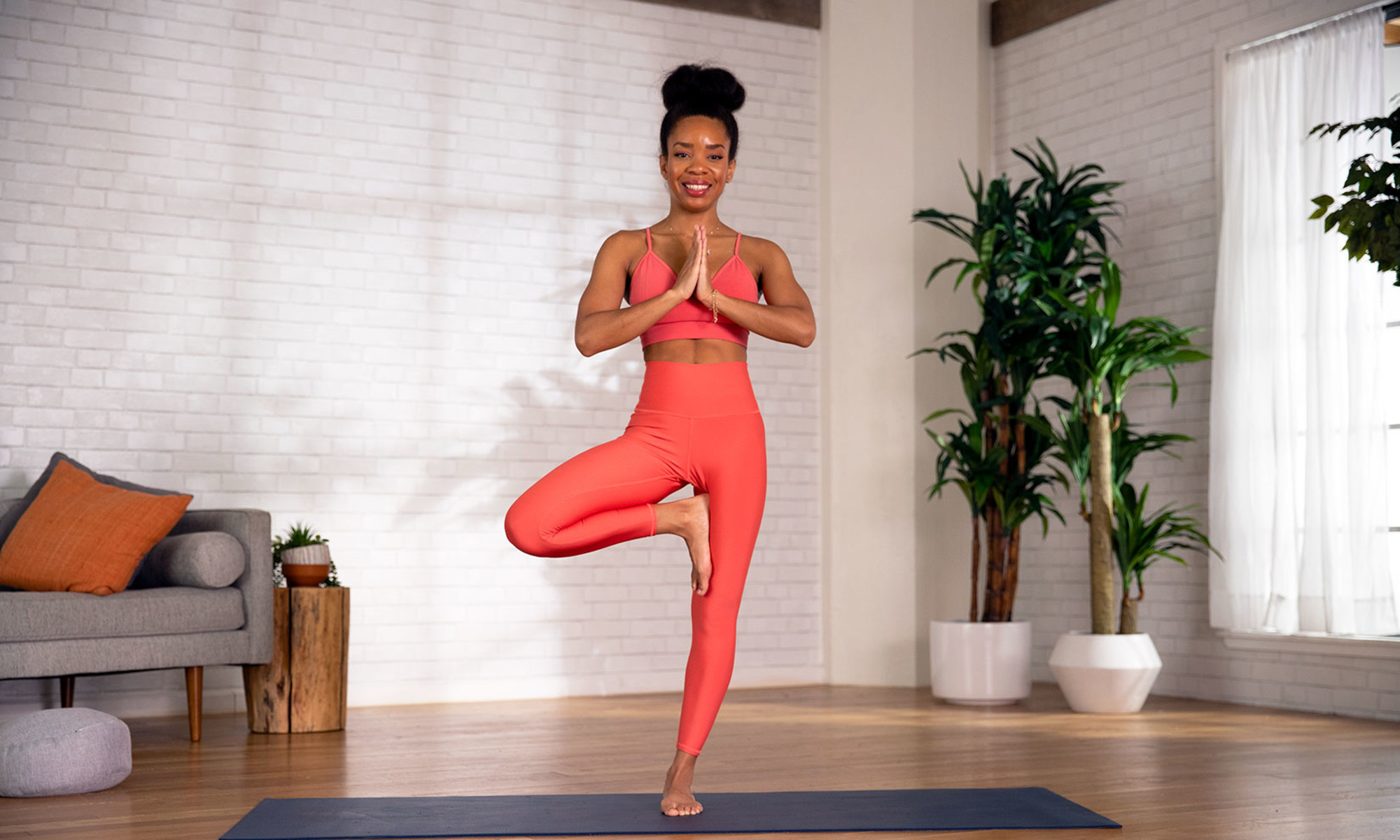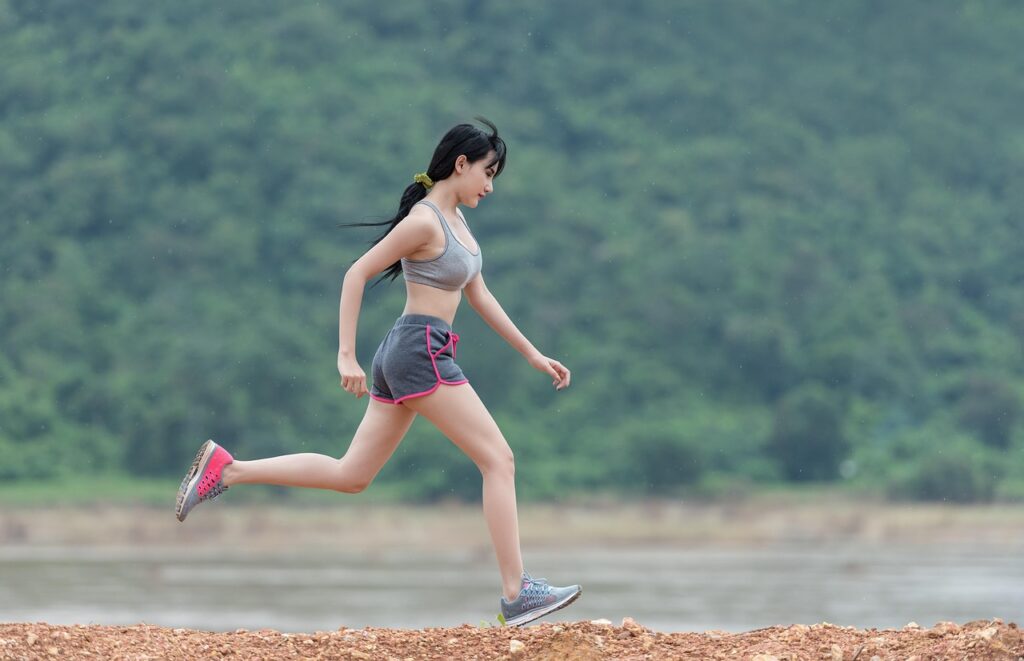
As a fitness specialist who works primarily with adults over 50, I’ve seen firsthand how challenging it can be to stay active as we age. Many of us might have tried hitting the gym only to find that those high-intensity workouts leave our joints screaming, or perhaps we’ve convinced ourselves that serious exercise just isn’t in the cards anymore. This common perception, however, overlooks the incredible potential for transformation that gentle, sustainable movement offers, proving that you don’t need to punish yourself to achieve a healthier body after 50.
The biggest hurdle for many individuals over 50 isn’t physical, it’s often mental. We either think we’re too old for serious exercise, or we get discouraged when we can’t keep up with the same routines we did in our 30s. Adding to this, many of us are already dealing with some stiffness or joint pain, and the last thing we want is to inadvertently make those conditions worse through strenuous activity.
This is precisely where the power of low-impact exercise shines. These movements are specifically designed to be gentle on your joints, yet they remain incredibly effective for building essential strength, improving crucial balance, and significantly boosting your overall fitness. What’s more, they are inherently sustainable, meaning you can incorporate them into your routine regularly without risking injury or experiencing excessive fatigue. Best of all, most of these beneficial exercises can be done right in the comfort of your home, completely eliminating the need for a fancy gym membership.

1. **Embracing Gentle Movement: Why Your Body Needs It Now**Let’s truly be honest with ourselves for a moment—the perception that we’re too old for serious exercise, or the frustration of not performing as we did in our younger years, often creates a significant mental block. This internal resistance can prevent us from even starting or consistently adhering to a fitness regimen. However, recognizing that our bodies simply require a different approach as we age is the first step toward sustained well-being and vitality.
Low-impact exercises are specifically engineered to provide an effective workout without subjecting your joints to undue stress or jarring movements. They skillfully engage muscle groups, promote cardiovascular health, and enhance flexibility, all while minimizing the risk of impact-related injuries. This makes them an ideal solution for anyone experiencing stiffness, joint pain, or simply seeking a more forgiving yet potent way to maintain their physical health. The goal is to build a stronger, more capable body without the wear and tear that high-impact activities might entail.
By choosing gentle movements, you’re not sacrificing effectiveness; you’re optimizing your approach for longevity and consistency. These exercises focus on controlled motions and gradual improvements, ensuring that your fitness journey is not only productive but also enjoyable and pain-free. They are about nurturing your body, building resilience, and fostering a positive relationship with physical activity that can truly last a lifetime.
Read more about: The Blue Zone Blueprint: Simple, Science-Backed Secrets for a Longer, Healthier Life, Easier Than You Think

2. **Seated Marching: Strengthening Legs Without Standing Up**Don’t let the apparent simplicity of seated marching deceive you; this is a true powerhouse move for effectively building leg strength and significantly improving coordination. It’s an absolutely perfect starting point if you’re just embarking on your fitness journey, or if standing exercises present a current challenge due to balance issues or joint discomfort. This exercise demonstrates that impactful leg work doesn’t always require you to be on your feet.
To perform this highly beneficial exercise, begin by sitting tall and comfortably in a sturdy chair, ensuring your feet are flat on the floor directly beneath you. Once settled, gently lift one knee up toward your chest in a controlled motion, then slowly lower it back down to the starting position. Immediately repeat this same deliberate action with your other leg, alternating between the two. Aim for a continuous march lasting 1 to 2 minutes per session, and try to incorporate this into your routine 3 to 4 times throughout the week. Remember to maintain that tall posture throughout, actively avoiding any tendency to lean back in the chair, which helps prevent unnecessary strain on your lower back.
If you find the initial pace too brisk or the knee lift too high, feel free to slow down your pace or adjust the height of your knee lift to a comfortable level. The key is controlled movement, not speed. Conversely, for those ready for a bit more challenge and a deeper engagement, you can slightly increase your pace. Additionally, incorporating light ankle weights can introduce extra resistance, further intensifying the muscle activation and strength-building benefits. Consistency in form and effort is more important than extreme exertion.
This exercise specifically targets your quadriceps, hamstrings, and hip flexors, contributing to overall lower body strength and endurance. Regular practice of seated marching can lead to noticeable improvements in your ability to walk, climb stairs, and perform daily activities with greater ease and confidence. It’s a foundational movement that supports more complex activities by establishing a solid base of strength in a safe, controlled manner.

3. **Standing Leg Curls: Saying Goodbye to Weak Knees**Standing leg curls are an absolutely fantastic exercise for specifically targeting the hamstrings, those crucial muscles situated at the back of your thighs that, quite frankly, often get neglected in many fitness routines. These hamstrings are not just for powerful leg movements; they are crucially important for maintaining knee stability, a factor that becomes increasingly vital for preventing injuries and supporting mobility as we gracefully age. Strengthening them can truly make a difference in your knee health.
To effectively perform this movement, stand tall and upright, ensuring your spine is neutral, while holding onto a sturdy chair or a kitchen counter for dependable support and balance. This support is key to focusing on the muscle engagement. With one leg firmly planted, slowly and deliberately bend the knee of your free leg, bringing your heel progressively closer toward your buttocks. Once you reach the peak of the curl, maintain control as you slowly lower your foot back down to the starting position. Aim to complete 2 to 3 sets of 10 to 12 repetitions on each leg, committing to this routine 3 to 4 times per week for optimal results.
For those just beginning or experiencing particular sensitivity, an easier version involves simply bending your knee slightly, focusing intently on very slow and exceptionally controlled movements. The quality of the movement outweighs the range of motion initially. However, if you are looking to elevate the challenge and engage your hamstrings more deeply, consider holding the bent position for a few seconds at the top of the movement before gradually lowering your leg. Alternatively, adding light ankle weights can significantly increase the resistance, providing a more intense workout. Crucially, always remember not to arch your back excessively during this movement; keeping your spine neutral is paramount to avoiding discomfort or potential strain.
Regularly incorporating standing leg curls into your routine will not only enhance the strength of your hamstrings but also contribute significantly to the overall stability of your knee joints. Stronger hamstrings help to balance the forces around the knee, reducing the risk of strain and improving your ability to absorb impact during walking or everyday movements. This targeted strengthening is a proactive step towards healthier, more resilient knees, allowing you to move with greater confidence and less pain.

4. **Heel-to-Toe Walking: Preventing Falls One Step at a Time**As we gracefully navigate the journey of aging, our balance, unfortunately, often begins to deteriorate, sometimes imperceptibly, until we experience a startling close call or, more seriously, an actual fall. This decline in balance can significantly impact our independence and confidence in daily activities. Heel-to-toe walking is a beautifully simple yet extraordinarily effective exercise specifically designed to markedly improve both balance and overall stability, helping to safeguard against these risks.
To practice this crucial exercise, first find a clear, unobstructed path within your home. A hallway often works perfectly, as it provides a straight line and the added benefit of a wall for support if you should need it. Begin by placing the heel of your right foot directly in front of and touching the toes of your left foot, as though you are meticulously walking on a tightrope. This precise placement is key. Continue this deliberate, measured pattern, ensuring that the heel of each subsequent foot is placed directly in front of the toes of the other foot, maintaining a steady and controlled pace. Dedicate 1 to 2 minutes at a time to this exercise, integrating it into your routine several times each week.
Should this exercise initially feel too demanding or challenging for your current balance level, there’s no need to push beyond comfort. Simply start with slightly smaller steps, not requiring your heel to touch the toes quite so precisely, and maintain a slower, more deliberate pace. As your balance progressively improves with consistent practice, you can gradually increase both the duration of your walking time and the precision of your foot placement. Throughout the entire exercise, consciously strive to keep your posture aligned and upright, and actively resist any urge to lean forward as you walk; maintaining this upright alignment maximizes the balance benefits.
Regular engagement in heel-to-toe walking will cultivate a profound improvement in your proprioception—your body’s awareness of its position in space—and strengthen the small stabilizing muscles in your feet and ankles. These enhancements directly translate into a more stable gait and a significantly reduced risk of falls, empowering you to navigate your environment with greater confidence and security. It’s a small commitment with immense returns for your safety and mobility.”
Having established a strong foundation with exercises that target core stability and lower body strength in a controlled manner, we now turn our attention to movements that expand your range of motion and fine-tune your balance even further. These next exercises will help you develop robust hip strength, essential for lateral stability, and improve the intricate coordination of your ankles and lower legs, which are often overlooked but critical components of confident, injury-free movement. We’ll conclude with practical advice to seamlessly weave these beneficial practices into your daily life.
5. **Your Hips Will Thank You for This One: Side-Stepping**Many conventional exercise routines predominantly emphasize forward and backward movements, inadvertently neglecting the crucial lateral muscles in our hips. This oversight can create imbalances that compromise overall stability and increase the risk of falls, especially as we navigate uneven surfaces or unexpected turns in daily life. Side-stepping is an incredibly effective and gentle exercise specifically designed to target these vital hip muscles, promoting robust lateral movement capability which is truly essential for maintaining balance and preventing those all-too-common stumbles.
To perform this highly beneficial movement, begin by standing with your feet positioned hip-width apart, ensuring a slight bend in your knees to keep them soft and ready for action. Initiate the exercise by taking a deliberate step to your right with your right foot, then consciously bring your left foot to meet it, maintaining that consistent hip-width distance. Continue this rhythmic stepping motion to the right for several repetitions or a comfortable distance, focusing on controlled and smooth transitions. Once you’ve completed your desired repetitions on one side, reverse the direction and repeat the entire sequence, stepping to the left. Aim to perform side-stepping for a duration of 1 to 2 minutes, incorporating this into your routine 3 to 4 times per week for optimal results.
For those just beginning or seeking a less challenging approach, simply take smaller steps, focusing on precision and control rather than a wide range of motion. You can also incorporate brief rests between each set of steps to manage fatigue effectively. Conversely, if you’re looking to intensify your workout and engage those hip muscles even more deeply, consider increasing your pace slightly, or, for a truly enhanced challenge, place a resistance band around your legs just above the knees. This adds a layer of resistance that significantly amplifies the muscle activation and strength-building benefits.
Throughout the entire exercise, it’s paramount to maintain an upright posture with your chest lifted, actively resisting any tendency to slouch or excessively turn your body. The movement should primarily originate from your hips and legs, ensuring that the targeted muscles are effectively engaged and reducing strain on your back. Regularly integrating side-stepping into your regimen will significantly bolster the strength of your glutes and outer thigh muscles, empowering you to move with greater confidence and agility in all directions.

6. **Tap Your Way to Better Balance: Toe Taps**When we think about exercises for balance and mobility, our ankles and lower legs are often unfairly overlooked, despite their absolutely pivotal role in our ability to walk, stand, and navigate various terrains with confidence. These smaller, stabilizing muscles in the feet and ankles are the unsung heroes of our upright posture and fluid movement. Toe taps offer a brilliantly simple yet remarkably effective way to enhance the coordination of these critical lower leg muscles while simultaneously strengthening the ankles, making them more resilient and responsive.
To execute this deceptively simple but powerful exercise, begin by sitting comfortably in a sturdy chair, ensuring your back is straight and your feet are flat on the floor directly beneath your knees. Maintaining a firm connection between your heel and the ground, gently lift the toes of your right foot upward toward your shin, feeling the stretch in your ankle and lower calf. After a brief hold, slowly tap your toes back down to the floor in a controlled motion. Immediately repeat this precise action with your left foot, alternating between the two legs. Strive to perform 2 to 3 sets of 10 to 15 repetitions on each leg, integrating this beneficial exercise into your routine 3 to 4 times throughout the week.
If you find the initial repetitions challenging, there’s no need to push through discomfort. Simply slow down the movement, focusing intently on the quality and control of each tap, and allow yourself to rest briefly between sets as needed. As your coordination and strength progressively improve, you can gradually increase the speed of your taps to introduce a greater challenge. For those ready for a more intense workout, carefully placing a light ankle weight across your feet can significantly increase the resistance, further engaging the muscles of your lower legs. Always ensure your movements remain deliberate and controlled, as jerky motions can inadvertently place unnecessary strain on your knees or ankles.
Consistent practice of toe taps will lead to remarkable improvements in your ankle stability and proprioception – your body’s inherent awareness of its position in space. These enhancements are incredibly valuable for everyday activities, from confidently walking across uneven pavements to recovering your balance quickly if you stumble. By fortifying these often-neglected muscles, you are proactively building a more stable and agile foundation, allowing you to move through life with greater ease and reduced risk of falls.
7. **No Need to Overthink Your Workout Schedule: Simplifying Your Fitness Routine**One of the most significant barriers to maintaining a consistent exercise routine, especially for adults over 50, is the misconception that fitness requires a complex, time-consuming, or grueling regimen. Many believe they need an elaborate training schedule or hours in a gym to see results, leading to discouragement before they even truly begin. The truth is, impactful fitness doesn’t need to be complicated; it simply needs to be consistent and tailored to your body’s needs, proving that a simpler approach is often the most sustainable and effective one.
To seamlessly integrate these low-impact exercises into your life, start by choosing just 3 to 4 days each week for your dedicated exercise sessions. The beauty of these gentle movements is their flexibility; you can perform them any time that fits your schedule, whether it’s first thing in the morning or as a midday energizer. Aim for approximately 30 minutes per session, and feel free to mix and match the exercises we’ve covered throughout this guide. For instance, you might combine seated marching with side-stepping one day, and standing leg curls with toe taps on another. This varied approach keeps your routine engaging while ensuring a balanced full-body workout.
Remember that the true power of low-impact exercise lies in its sustainability and the cumulative benefits it offers over time. You are not striving for intense, sporadic bursts of activity, but rather consistent, gentle engagement that nurtures your body and builds resilience day by day. Don’t feel pressured to do every exercise perfectly or for extended durations initially. The goal is to establish a rhythm that feels manageable and enjoyable, fostering a positive relationship with movement that you can maintain effortlessly in the long term.
By simplifying your workout schedule and focusing on achievable, consistent sessions, you’re setting yourself up for success, not burnout. This approach removes the mental burden often associated with exercise, allowing you to embrace physical activity as a natural and joyful part of your life. It’s about building healthier habits that stick, empowering you to enjoy enhanced strength, balance, and vitality without ever feeling overwhelmed.
Embracing low-impact exercises after 50 isn’t just about maintaining physical function; it’s about reclaiming vitality, enhancing independence, and fostering a profound sense of well-being that truly enriches every aspect of your life. These gentle yet powerful movements are your allies in cultivating a body that feels stronger, more balanced, and incredibly capable, allowing you to navigate life’s adventures with newfound confidence and joy. You’re not just exercising; you’re investing in a vibrant, active future where every step forward is a step towards a healthier, more fulfilling you. So, take these insights, apply them with consistency, and watch your body thank you for the transformation.





